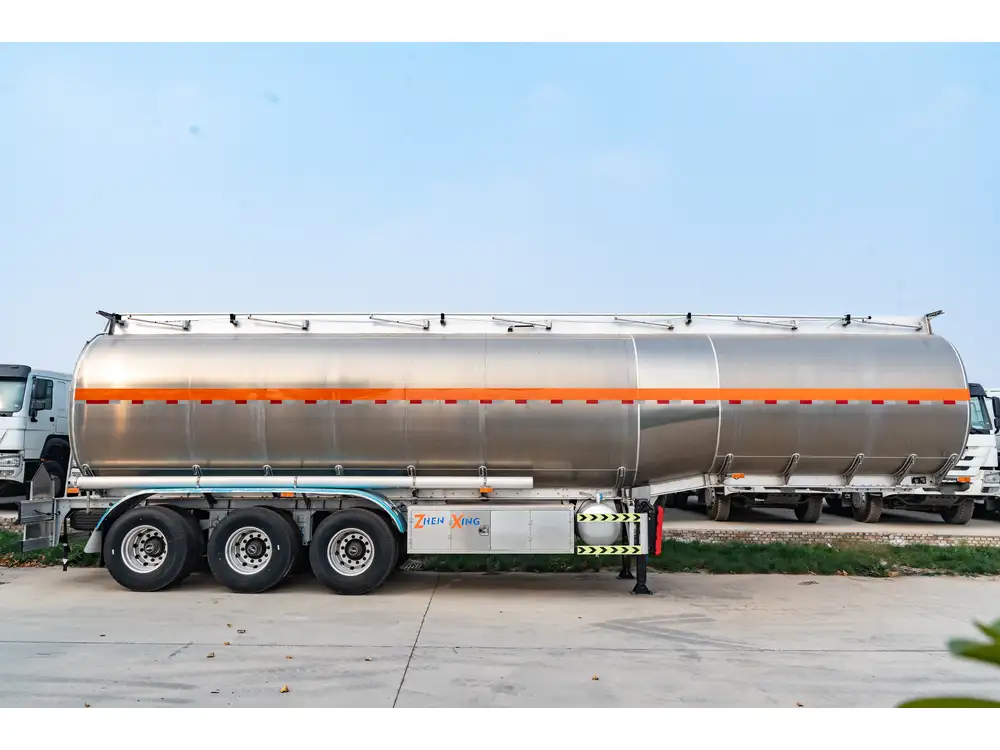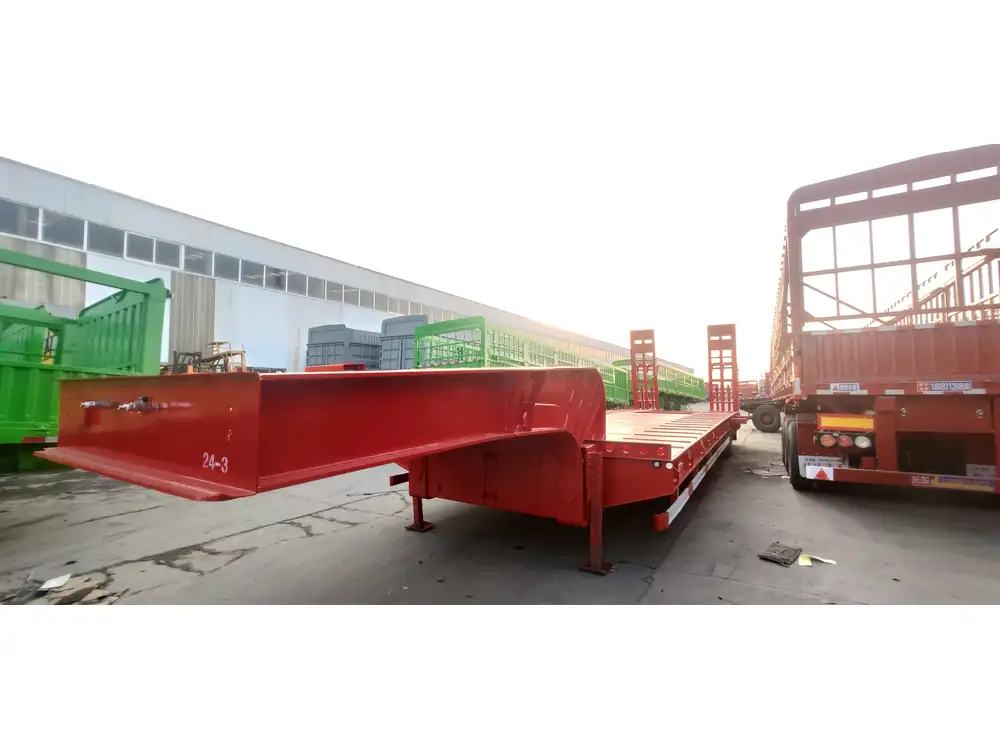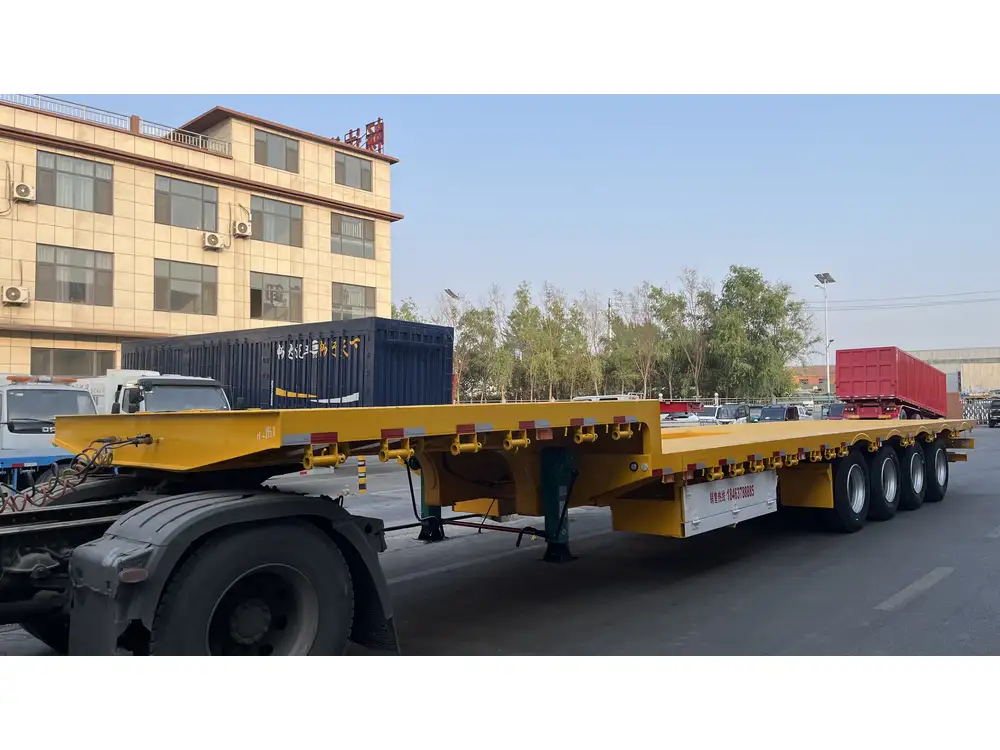When it comes to transporting goods, the dimensions of the trailer can significantly impact operational efficiency. One of the most frequently asked questions by logistics companies, freight forwarders, and truck owners is: how high is the inside of a semi-trailer? This critical dimension affects not only the capacity of the goods transported but also compliance with regulations, loading procedures, and vehicle stability. In this article, we will delve deep into the standard measurements of semi-trailers, explore variations, and discuss other relevant factors that can influence the interior height, catering specifically to users’ needs and concerns.
Standard Interior Height of Semi-Trailers
Measuring Up: The Basics
The interior height of a standard semi-trailer typically ranges from 13.5 feet (162 inches) to 14.5 feet (174 inches). This height is essential as it determines how much cargo can be loaded and what type of materials can be transported.
Here is a breakdown of some common types of semi-trailers and their typical interior heights:
| Trailer Type | Interior Height Range |
|---|---|
| Dry Van Trailers | 13.5 – 14.5 feet |
| Reefer Trailers | 13.5 – 14.5 feet |
| Flatbed Trailers | 10.0 – 12.0 feet |
| Step Deck Trailers | 11.0 – 12.0 feet |
| Lowboy Trailers | 9.0 – 10.5 feet |

Factors Influencing Interior Height
While standard measurements provide a solid foundation, various factors can significantly influence the height available inside a semi-trailer. Understanding these elements can help stakeholders make informed decisions.
Trailer Design and Purpose
The design of the semi-trailer is primarily influenced by its intended use. For instance:
- Dry Van Trailers are built with a tall, enclosed structure to protect cargo from weather elements. They typically offer greater height for storing higher loads.
- Reefer Trailers are refrigerated carriers and often mirror the heights of dry vans, but consider insulation that may marginally reduce usable interior height.
- Flatbed Trailers offer much lower heights, accommodating goods that do not need weather protection but may require securing across the flat surface.
Regulatory Compliance
Each state or region has regulations concerning vehicle height, which means interior trailer height can be limited by law. Though 13.6 feet is commonly accepted as a “legal limit” for the overall height of the trailer on highways, the actual usable interior height must also accommodate legal restrictions when loaded.

Suspension and Variety of Axles
The kind of suspension system and the number of axles can affect ride height. Some trailers have adjustable suspension systems that can lower the ride height for easier loading, thus providing temporary increases in interior clearance when needed. Examples include:
- Lowered Axle Systems: Can be beneficial for loading obstacles or height clearance but might sacrifice stability.
- Multi-Axle Designs: Additional axles may sometimes lower the overall trailer height but benefit weight distribution.
Importance of Knowing Interior Height
Cargo Compatibility
Understanding the interior height of a semi-trailer aids in determining what kinds of cargo can comfortably fit. This is paramount for logistics managers planning transport schedules or designing delivery strategies. Here’s why:
- Large Loads: Whenever working with oversized goods like construction materials or machinery, the interior height must be adequate to ensure safe stacking or lashing.
- Vertical Space Utilization: Optimal use of vertical cargo space increases efficiency and reduces shipping costs.

Loading and Unloading Efficiency
Efficient loading and unloading processes are imperative in logistics operations. Having the correct interior height allows for the following:
- Forklift Operations: If the interior height is insufficient, forklifts may struggle to maneuver inside the trailer or turn with taller loads.
- Dock Compatibility: Many loading docks are designed for a height range; knowing the trailer’s height ensures a good fit.
Safety and Stability Concerns
Stability is a non-negotiable aspect when transporting loads. The height of the trailer contributes to the overall center of gravity. The implications include:
- High Center of Gravity Risks: Taller trailers can have heightened instability, particularly in windy conditions or during turns at high speeds.
- Loading Safety: Ensuring the height facilitates secure loading practices minimizes the chances of cargo shifting during transit.
Custom Semi-Trailer Interior Heights
While standard trailers are widely used, customization is an option to accommodate specific business needs.

Benefits of Customization
- Tailored Dimensions: Custom trailers can offer unique specifications, such as increased height or enhancements based on specific cargo requirements.
- Maximized Capacity: Custom builds can enable users to transport goods that may not fit standard measurements, enhancing logistics efficiency.
Examples of Customized Solutions
| Customization Type | Possible Interior Height | Ideal For |
|---|---|---|
| Extended Height Trailers | Up to 15.5 feet | Oversized products, industrial machinery |
| Drop Deck Trailers | Varies | Heavy loads that require a lower center of gravity |
| Custom Reefer Trailers | Up to 14.5 feet | Perishable goods in bulk requiring additional height |
Tips for Choosing the Right Semi-Trailer Height
Selecting the appropriate semi-trailer height requires careful consideration of various elements. Here are essential tips:
- Evaluate Your Cargo: Understand the dimensions and nature of the goods needing transportation.
- Consider Loading Equipment: Ensure compatibility with forklifts and other loading equipment.
- Check Local Regulations: Ensure compliance with transportation norms in your operating regions.
- Consult with Manufacturers: Speak with trailer manufacturers regarding available options specific to your needs.
- Plan for Future Needs: Anticipate potential changes in cargo types or volumes when selecting trailer specifications.

Conclusion
The question of how high is the inside of a semi-trailer extends far beyond mere numbers; it encapsulates a myriad of considerations from cargo type to regulatory compliance. The internal height plays a vital role in determining what can be transported, how efficiently loading can occur, and most importantly, safety during transit. By understanding standard measurements, factors affecting height, and the benefits of customization, fleet managers can make informed choices that optimize their logistics operations.
Whether you are a logistics company, a freight booking agent, or a goods manufacturer, knowing the nuances of trailer interior height could make all the difference in achieving operational efficiencies and delivering goods seamlessly. Investing the time to choose the correct semi-trailer height is a pivotal step towards enhancing your supply chain logistics.



